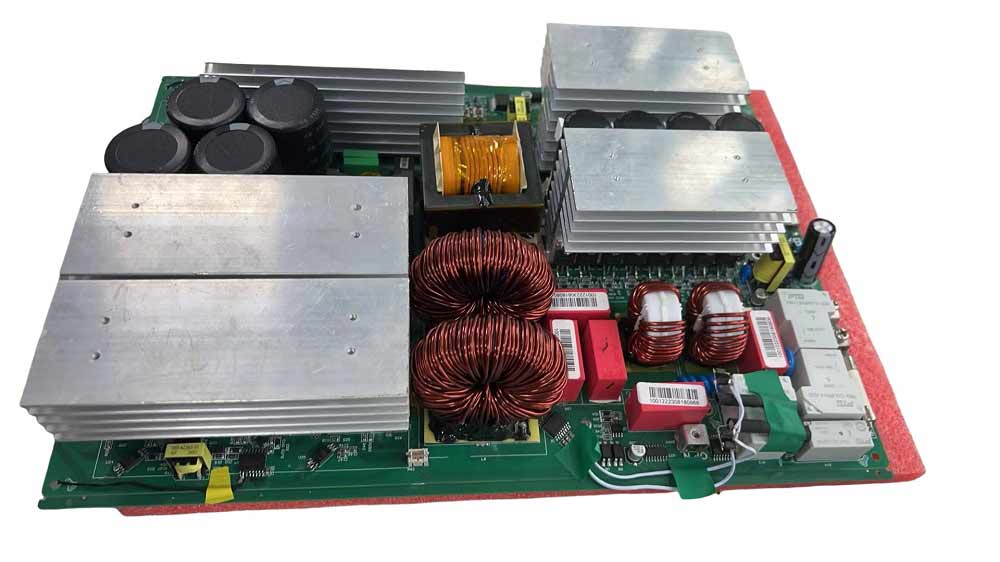Shiningintl has launched the single phase 220VAC output inverter board, but inorder to output the 3 phase 380VAC voltage in some application, it has to create a 3 phase power system, Shiningintl provides the latest 3 phase 380VAC output solution based on the shiningintl 6KW system
To generate a 3-phase 380V AC output using three 220V single-phase inverters with a 120° phase shift, follow these steps:
Step 1: Hardware Setup
- Shiningintl 6KW on-grid Inverter board Configuration:
- Use 3 identical 6KW 220VAC single-phase inverters (ensure they support phase-shifting and synchronization).
- Label them as Inverter A, B, C.
- Wiring Connection:
- Connect the inverters in a star (Y) configuration:
- Link the neutral terminals (if available) of all inverters to a common neutral point (N).
- Connect the phase outputs (L1, L2, L3) of each inverter to the three-phase load (U, V, W).
- Connect the inverters in a star (Y) configuration:
Step 2: Phase Shifting
- Set Phase Angles command:
- Inverter A: Phase angle = 0° (reference).
- Inverter B: Phase angle = 120°.
- Inverter C: Phase angle = 240° (or -120°).
- Synchronization:
- set up the 3 inverter boards frequency, and make sure that all inverters share the same frequency (50Hz/60Hz) and phase alignment.
- the setup method please refer to Shiningintl inverter communication protocols:
Step 3: Voltage & Frequency Matching
- Output Voltage:
- Set each inverter to output 220V phase voltage.
- The line-to-line voltage will be:
Vline=3×220V≈380V (3-phase).
- Frequency Sync:
- Ensure all inverters operate at the same frequency (e.g., 50Hz ±0.1Hz) to avoid power oscillations.
Step 4: Control & Communication
- Phase-Locked Loop (PLL):
- Implement a PLL circuit or software algorithm to lock the phase angles precisely.
- Tools: MATLAB/Simulink for PLL simulation, or use pre-built inverter firmware.
- Communication Protocol:
- Connect inverters via CAN bus, RS485, or Modbus to share phase and frequency data.
- Example: Use a CANopen protocol for real-time synchronization.
Step 5: Testing & Validation
- No-Load Test:
- Measure line-to-line voltages (U-V, V-W, W-U) with a multimeter. They should read ~380V AC.
- Use an oscilloscope to verify 120° phase differences between waveforms.
- Load Test:
- Connect a balanced 3-phase load (e.g., 3-phase motor).
- Check for voltage stability (±5% tolerance) and neutral current (should be near zero in a balanced system).
Critical Considerations
- Circulating Currents:
- Add current-limiting reactors or use droop control to balance currents between inverters.
- Harmonic Filtering:
- Install LCL filters at inverter outputs to reduce THD (<5%).
- Protection:
- Enable overcurrent/overvoltage protection on all inverters.
- Shiningintl has fixed all previous problems, and using our 6KW inverter baords to setup this system, it is easy to operation.

